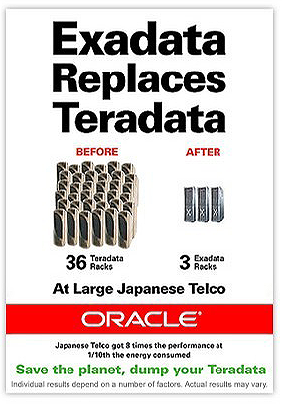 This is a guest post by Luke Miller, Founder and CEO of Offset Options, a Barcelona & London-based startup using web services to fight climate change.
This is a guest post by Luke Miller, Founder and CEO of Offset Options, a Barcelona & London-based startup using web services to fight climate change.
The majority of today’s start-ups are focused on making an action, a process, purchase or communications easier, cheaper and more efficient. This efficiency can offer great reduction in environmental impact – for your industry and to your consumer. Being aware of your environmental impact – and the value you provide for customers in reducing theirs – from the early stage enables you to understand how you can build this in consciously so it has the lowest cost and largest benefit.
And the benefits can be huge: attracting new customers and differentiating your company all while helping the environment.
Why should you care? Because big business does and consumers care
According to Boston Consulting Group [Link to BCG Survey: Capturing the Green Advantage for Consumer Companies, 2009 PDF] one third of consumer in both North America and Europe when purchasing look for products which and services which are environmentally sustainable.
Example one: You read The Economist right? Turn to the back of the magazine and check out the ads from Oracle that run each week. This is from last week’s Euro edition:

Large business across the world is embedding environmental requirements into their procurement policies and into KPI’s of modern managers; this means if you can address environmental issues you will not only have the latest solution for the decision maker to sign off on, but make it even easier for them to sell internally. Saving time, money and environment is an even easier sell.
If you are competing with big business, they are generally slower to move in a new technical, policy or mentality direction, so this is a way for you to add further differentiation to your business. This is not simply about your servers, although using the least emissions possible for your servers is great thing.
Google and Facebook are already doing interesting things in this space, and the jury is still out on Cloud computing.
Review how your process leads to more sustainable outcomes for your customers.
An example is Garmz.com (rebranding as Lookk.com). (Disclosure: Garmz is part of the Seedcamp portfolio, as is my company.)
Garmz focuses on generating demand for a product for independent designers before they have a production run. This means that there is less risk for the designer, however also means there is less waste because demand is assured before creations are produced. Establishing feedback mechanisms between demand and supply is a great step in the fashion space, which generally has exceptionally wasteful production and shipping processes.
Airbnb. You all know them. This is a great service that had its first bump recently. An obvious benefit of this service is social interaction with someone in the location you are visiting – however this is also a great example of resource reuse.
Hotels are seldom at full capacity normally around 2/3 in good times. Moving towards models of greater resource re-use for residential infrastructure now looks like an obvious idea, however has significant environmental benefits. People are leasing properties, a room or a foldout couch that would otherwise go unused. With the explosion of international travel with low cost airlines, more people want an interesting way of travel at reasonable cost without a socially sterile hotel.
There is not a great deal more power used in shared space, it does require the building of extensive additional infrastructure (did you know the concrete industry is one of the highest polluting relative to the size of its industry? Around 5% of global emissions. Wow indeed. According to our estimates, on average Airbnb would reduce the emissions from residential stays by a minimum of 65% compared to standard stays.
Still don’t see how your business fits in?
Even if you’re not directly leading to energy or process efficiencies, there could be a role for you in providing information to help your corporate clients or consumers to be more informed and make better decisions. If your service is there to help, then go above and beyond your competitors to explain the environmental impact of a decision you may facilitate.
A clear space where this happens in your everyday life is travel. Many online travel agents and travel meta search companies are embedding environmental data in the decision flow for customers. One of our new clients, rome2rio, is not only providing new information about alternative ways to arrive at a destination (such as ferries or trains in addition to planes), they’re including information about the carbon footprint of the trip to empower their customer to make a more informed decision. Consider whether you can offer a similar value to yours.
Don’t get left behind
Be proactive or expect to have to try and catch up with your competitors who will move first. This is a key difference from previous generations of entrepreneurs. This data is now available. This is an opportunity available today that will make your business more competitive while reducing your environmental impact.
So if you are an entrepreneur proving how you are more driven and provide more value than your competitors, don’t forget to embed environmental efficiency into your service offering. This is not simply an “add-on” it should be a part of the strategy of any up and coming entrepreneur.
Lead the way, or more importantly let your customers lead the way, by helping them to reduce their environmental impact and make better decisions – working together for better services that also address the greatest moral challenge of our time.